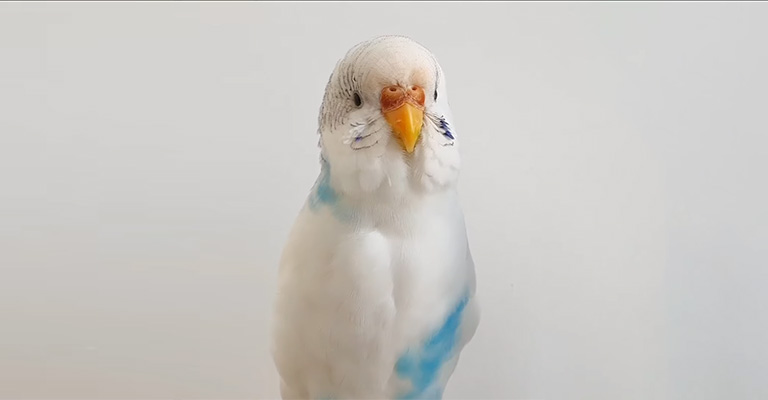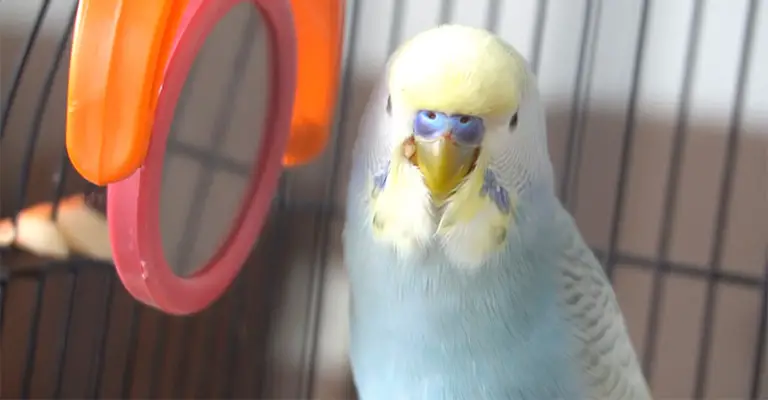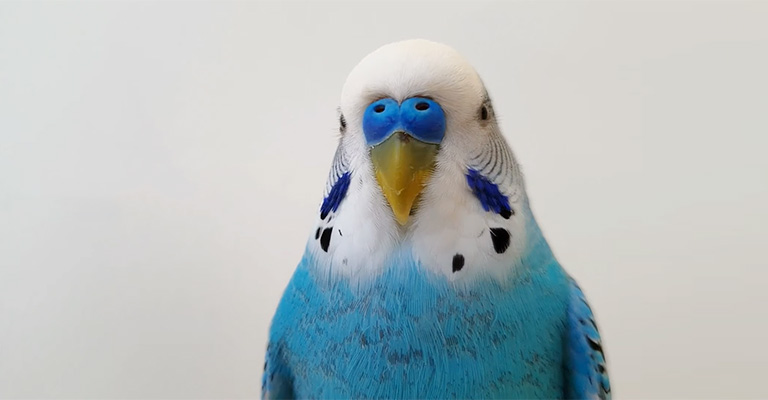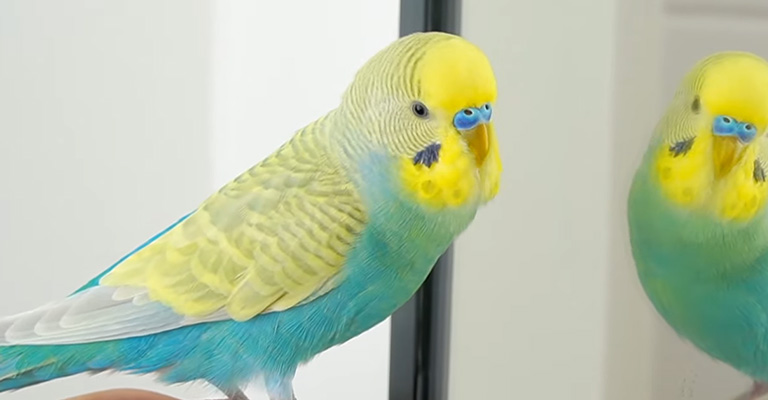The vibrant world of pet budgies can sometimes be accompanied by health concerns that warrant attention. One such perplexity is the appearance of a red scab near a budgie’s beak.
This enigmatic occurrence sparks curiosity and concern among budgie enthusiasts, raising questions about its causes, implications, and potential remedies.
Delving into the underlying reasons behind the appearance of a red scab near a budgie’s beak unravels a tapestry of possible triggers, ranging from injuries and infections to allergies and nutritional deficiencies.
Understanding why a red scab near a budgie beak not only aids in addressing the immediate issue but also contributes to the overall well-being and care of these charming feathered companions.

Why Does A Red Scab Near A Budgie Beak?
A red scab near a budgie’s beak can be a sign of various health problems or injuries.
Here are some possible reasons why your budgie may have a red scab near its beak:
Injury or Trauma
A red scab near a budgie’s beak could result from a minor injury or trauma. This might occur during interactions with cage accessories, perches, or other birds. Such injuries usually heal on their own.
Aggressive Behavior
If there are multiple budgies in the same enclosure, aggressive behaviour or fights could lead to injuries, including scabs near the beak. Monitoring their interactions and ensuring adequate space is crucial.
Feather Picking or Self-Mutilation
Budgies can engage in feather-picking behaviours due to stress, boredom, or health issues. Continuous picking can lead to scab formation near the beak and other areas.
Infection
Bacterial, fungal, or viral infections can cause skin irritations and scabs. These infections might result from unsanitary cage conditions or exposure to other sick birds.
Parasites

External parasites like mites or lice can irritate a budgie’s skin, leading to scabs. Regular cage cleaning and routine health checks can help prevent infestations.
Allergies
Budgies can develop allergies to certain foods, bedding materials, or environmental factors. These allergies might manifest as skin irritations and scabs.
Skin Disorders
Budgies, like all animals, can experience skin disorders that cause scabbing. These might be due to genetic factors or other underlying health issues.
Sunburn
Excessive exposure to direct sunlight without adequate protection can lead to sunburn and subsequent scabbing on exposed areas like the beak.
Malnutrition
A lack of essential nutrients in a budgie’s diet can lead to skin issues and poor feather quality, which might result in scabs forming near the beak.
If you notice a red scab near your budgie’s beak, it’s important to identify the underlying cause to provide appropriate care. Consulting an avian veterinarian is crucial for an accurate diagnosis and tailored treatment plan.
Regular veterinary visits and maintaining a clean, safe, and enriched environment can contribute to your budgie’s overall health and well-being.
What To Do If You See A Red Scab Near A Budgie Beak?

If you see a red scab near your budgie’s beak, you should take some action to help your budgie recover and prevent further complications.
Here are some possible solutions that you can try:
Observe Carefully
Start by closely observing the red scab near your budgie’s beak. Note its size, colour, and any changes in your budgie’s behaviour. This information can help you assess the severity of the issue.
Consult a Vet
If you notice a red scab near your budgie’s beak, it’s crucial to seek professional advice. An avian veterinarian can accurately diagnose the problem and recommend the appropriate treatment.
Isolate or Quarantine
If the scab is accompanied by signs of illness, consider isolating the affected budgie to prevent the spread of potential infections to other birds in your flock.
Maintain Cleanliness
Ensure that your budgie’s cage and surroundings are clean to prevent any further complications. Dirty conditions can exacerbate existing issues and delay the healing process.
Adjust Diet
Proper nutrition plays a significant role in a budgie’s health and healing. Consult your vet to ensure your budgie’s diet is well-balanced and appropriate for its needs.
Avoid Picking or Scratching
It’s essential to resist the urge to pick at or scratch the scab. Manipulating it can lead to infection or worsen the condition.
Topical Ointments (if recommended)
Depending on the vet’s advice, they might recommend a safe and appropriate topical ointment to aid in the healing process. Follow their instructions carefully.
Administer Medication (if prescribed)
If the vet prescribes Medication, ensure you administer it as directed. Follow the recommended dosage and duration to promote effective healing.
Monitor Progress
Keep a close eye on the scab’s healing progress and your budgie’s overall well-being. If you notice any worsening symptoms or lack of improvement, promptly contact your vet for further guidance.
Remember that each budgie is unique, and the treatment approach might vary based on the specific diagnosis.
Professional guidance is essential to ensure your budgie receives the appropriate care and treatment for its condition.
What Does An Unhealthy Budgie Beak Look Like?

An unhealthy budgie beak can indicate some serious health problems or diseases.
Here are some signs that your budgie’s beak may be unhealthy:
Overgrown Beak
An overgrown beak can indicate a budgie’s inability to properly wear down its beak through normal activities like chewing.
This could be a sign of nutritional imbalances or other health issues, requiring professional trimming to prevent discomfort and feeding difficulties.
Curved or Crooked Beak
A misshapen or curved beak might be due to genetic factors or a lack of proper nutrition during development. It can lead to difficulty in eating and grooming, and in severe cases, it might require veterinary attention.
Discolouration or Spots
Abnormal discolouration, dark spots, or unusual patches on the beak can indicate fungal or bacterial infections. Such infections need prompt treatment to prevent them from spreading to other areas.
Cracked or Chipped Beak
A cracked or chipped beak can occur from accidents or nutritional deficiencies. This condition can be painful and hinder the bird’s ability to eat and groom.
Bloody or Bleeding Beak:
Any signs of bleeding from the beak require immediate veterinary attention. Injuries, infections, or even mites can cause bleeding and should be addressed promptly.
Swelling or Growth
Unexplained swelling or growths on the beak could be indicative of tumours or other abnormal growths. These require professional evaluation to determine their nature and appropriate treatment.
Scaly or Flaky Appearance
A scaly or flaky texture on the beak might be a sign of nutritional deficiencies or certain health conditions. It’s important to address these issues to prevent further complications.
Prolonged Open Beak
If a budgie’s beak remains open for an extended period, it might indicate respiratory distress or overheating. Both situations require prompt attention to ensure the bird’s well-being.
Difficulty Eating or Drinking
A budgie with an unhealthy beak might struggle with eating or drinking. If you notice changes in eating habits, it’s essential to investigate the cause, which could range from dental problems to pain while eating.
Observing your budgie’s beak regularly and being aware of any changes is crucial for maintaining its overall health.
If you notice any of these signs, seeking advice from an avian veterinarian is recommended to ensure that any underlying issues are addressed promptly and appropriately.
FAQ
Several factors can cause this, including injuries, fights with cage mates, feather picking, infections, parasites, allergies, skin disorders, sunburn, or malnutrition. Identifying the exact cause is important for proper treatment.
Yes, aggressive behaviour or conflicts between budgies can lead to injuries, resulting in scabs near the beak. Monitoring their interactions and providing enough space can help prevent such issues.
Yes, infections caused by bacteria, fungi, or viruses can lead to skin irritations and scabs. If you suspect an infection, consult a vet for proper diagnosis and treatment.
Absolutely, allergies to certain foods, materials, or environmental factors can cause skin irritations and scabs. Identifying and eliminating the allergen can help alleviate the issue.
Yes, prolonged exposure to direct sunlight without protection can lead to sunburn and scabbing on exposed areas like the beak. Providing shade and limiting sun exposure can help prevent this.
Conclusion
In the intricate narrative of budgie care, the emergence of a red scab near a budgie’s beak unveils a spectrum of possibilities, each intertwined with the bird’s health and environment.
As we conclude this exploration, we’re reminded of the importance of vigilant observation, prompt action, and seeking professional advice from avian veterinarians.
Addressing the root causes of these scabs reflects our commitment to the health and comfort of our avian friends.
By fostering a safe, clean, and nourishing environment, we can ensure the vibrancy and vitality of our budgies, guiding them towards a life of well-being and contentment.